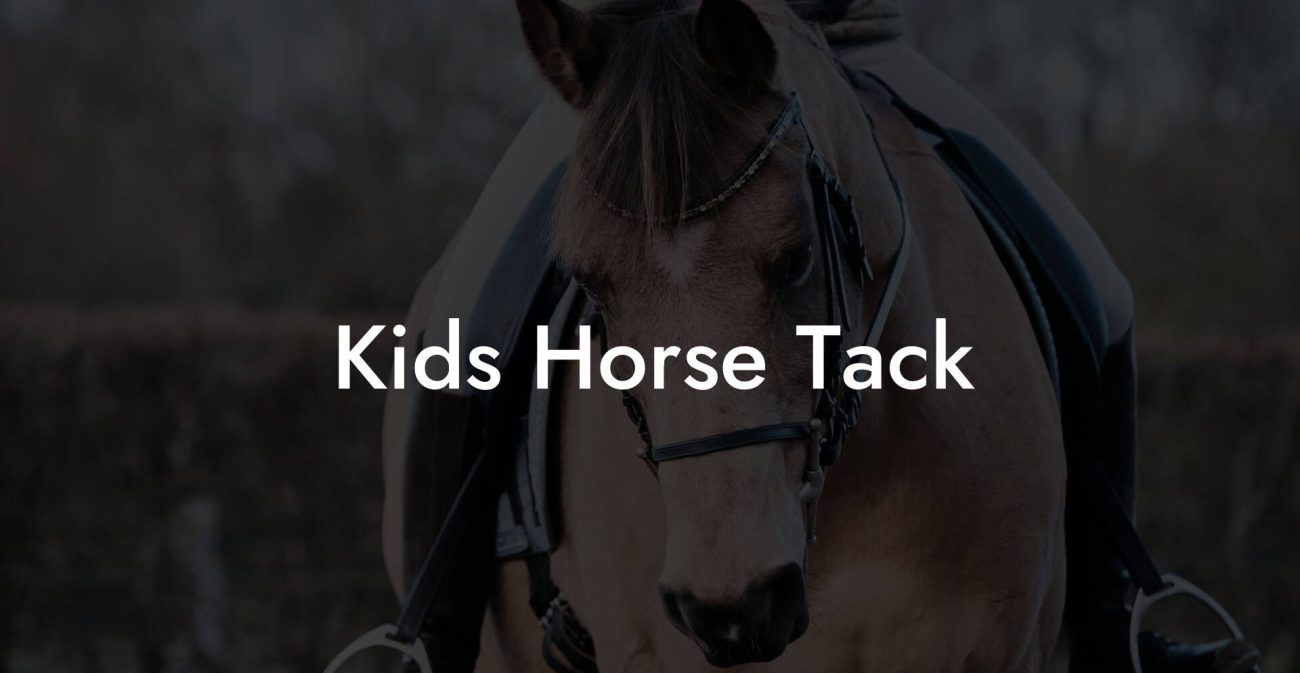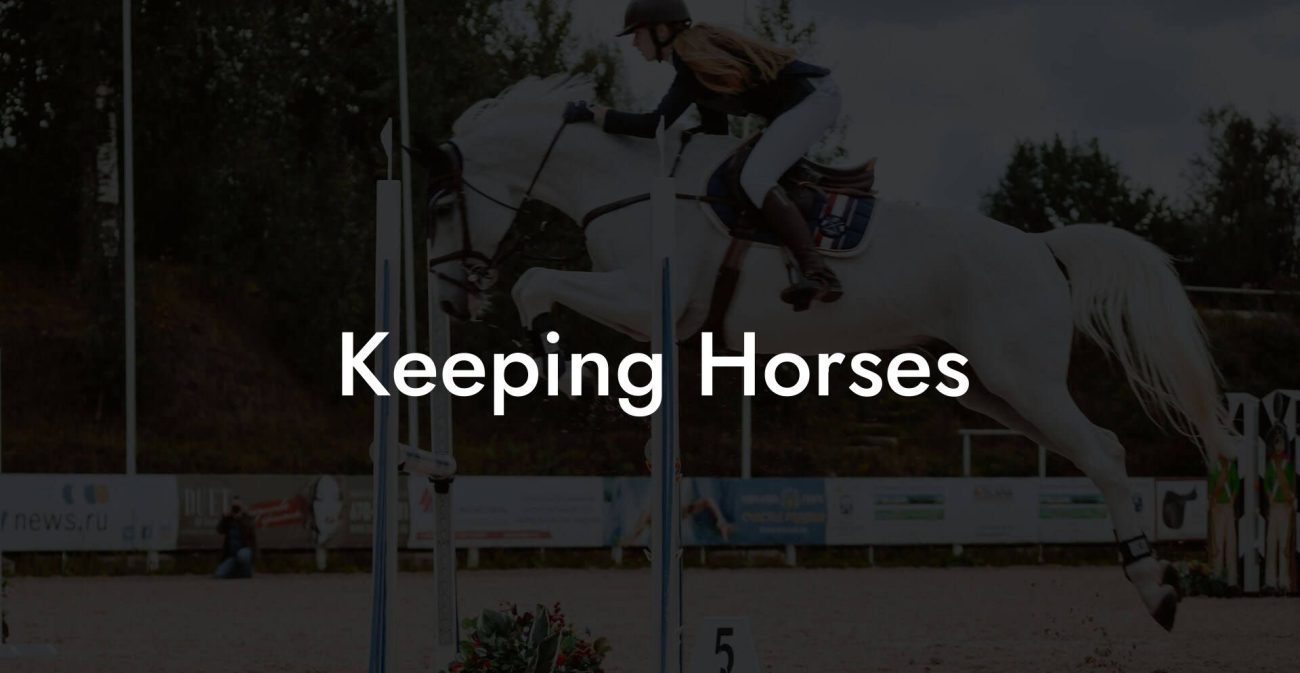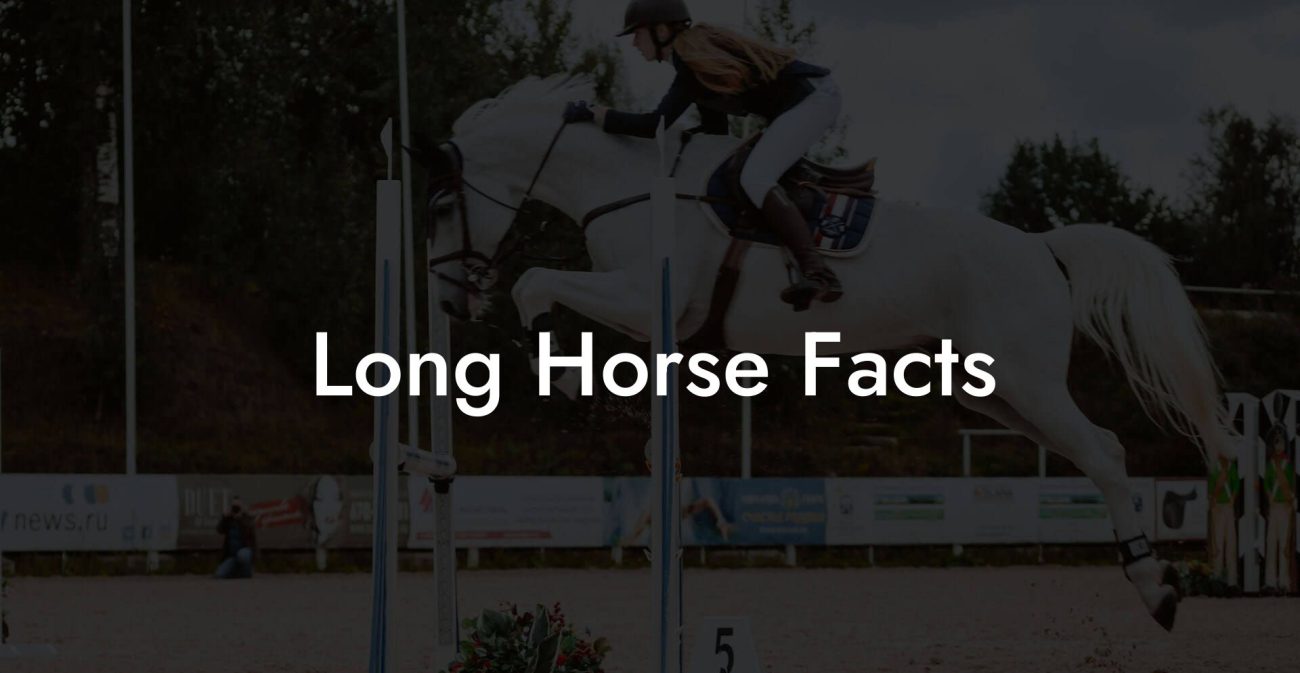There’s nothing quite like the charm of a mini horse, a pint-sized bundle of energy that can steal your heart with its quirky personality and surprising strength. But when it comes to how much these adorable equines can safely carry, the answer isn’t as straightforward as one might hope. In this deep dive, we’ll explore the fascinating world of mini horse physiology, debunk common myths about their load limits, and provide you with all the expert tips you need for ensuring your miniature equine’s well-being. Get ready to embark on a journey that blends science, personal stories, and hands-on advice for every Gen-Z and millennial equine enthusiast out there.
Quick Links to Useful Sections
- Understanding Mini Horses: Small in Stature, Big on Personality
- Mini Horse Physiology: A Closer Look at What Makes Them Special
- Factors Influencing Carrying Capacity: More Than Just The Numbers
- Establishing Safe Carrying Limits: Deep Dive into the Numbers
- Misconceptions and Myths: Debunking Overloaded Legends
- Choosing the Right Gear: Saddle Fit, Tack, and Other Essentials
- Holistic Mini Horse Care: Beyond Carrying Capacity
- Real-Life Stories: Mini Horses in Action
- Expert Recommendations: Guidelines from Veterinarians and Equine Specialists
- Modern Equine Innovations: Technology and Techniques in Mini Horse Care
- Integrative Training Approaches: Blending Work, Play, and Rest
- Resources and Community Support: Your Next Steps
- Frequently Asked Questions: Mini Horses and Their Carrying Capacity
- Your Journey to Responsible and Joyful Mini Horse Care
Understanding Mini Horses: Small in Stature, Big on Personality
Mini horses are a breed apart from the larger horses and even their pony cousins. With their compact bodies and spirited nature, they are more than just a novelty, they are versatile companions that excel in therapy, education, and even occasional trail riding (with careful management, of course). However, their petite size means that when it comes to carrying loads, both in a literal and metaphorical sense, they have limitations that are essential to understand in order to ensure their health and happiness.
Unlike full-sized horses, mini horses have a distinct physiology that influences their overall work capacity. Their shorter legs, compact muscle structure, and overall lighter body weight are ideal for companionship and agility, but can also play a crucial role in determining how much weight they can bear. Whether you’re considering using them for light riding or for showing, it’s vital to know their boundaries when it comes to physical loads.
Mini Horse Physiology: A Closer Look at What Makes Them Special
At the heart of every mini horse is a unique blend of genetics and natural evolution that has resulted in a sturdy yet compact animal. Mini horses typically weigh between 150 to 350 pounds, depending on the breed and individual genetics. This weight range not only defines their overall strength but also sets the baseline for determining how much load they can safely carry.
One of the key factors in assessing a mini horse’s carrying capacity is its body conformation. A well-proportioned mini horse with a strong back, healthy muscle tone, and balanced bone structure is better equipped to handle a load. However, even within this ideal, there are individual differences. Factors such as age, overall health, and even the horse’s daily routine and nutrition play a crucial role in determining its load-bearing ability.
Scientific studies on equine biomechanics have reiterated that load distribution and proper weight management are paramount. For mini horses, maintaining a load that doesn’t exceed 15-20% of their body weight is often recommended by veterinary specialists. This means that for a mini horse weighing 200 pounds, the safe carrying load is roughly 30-40 pounds. It might not seem like much, but it’s enough to support light riding, very short treks, or even a petite handler for a therapeutic session.
Factors Influencing Carrying Capacity: More Than Just The Numbers
When discussing how much a mini horse can carry, it’s vital to consider a range of factors that extend beyond the mere number on a scale. Here are some of the crucial elements that determine a mini horse’s carrying capacity:
- Age and Maturity: Young mini horses or growing foals are still developing muscle and skeletal strength, meaning they should never be tasked with carrying loads. On the other hand, mature mini horses in the prime of their life have a robust capacity, but even then, caution is key as they age.
- Overall Health and Fitness: Like athletes, mini horses in tip-top shape can handle more than those with a history of injuries or chronic health issues. Routine veterinary care, regular exercise, and a balanced diet can all contribute to improved load-bearing potential.
- Bone Structure and Conformation: The strength of the back, shoulders, and hindquarters determines how well a mini horse can support weight. Superior conformation often translates to a higher safe carrying capacity.
- Load Distribution: It’s not just about the total weight but also how that weight is distributed. A well-designed saddle and proper weight-bearing techniques are crucial to prevent undue stress on the horse's spine and joints.
- Environment and Terrain: Carrying capacity isn’t solely determined by the horse. The terrain also plays a role, a mini horse traversing flat, even ground is under less strain than one navigating rugged, uneven terrain.
- Duration of the Load: A quick jaunt around the block is very different from a long day of work. Even a safe load can become burdensome if sustained for an extended period without breaks or rest.
Understanding these dynamics helps tame the overwhelming flood of “what-ifs” when planning activities with your mini horse. By taking a holistic view of factors that affect carrying capacity, you’re better equipped to ensure that every adventure together is both fun and safe.
Establishing Safe Carrying Limits: Deep Dive into the Numbers
So, how much can a mini horse carry without jeopardizing its well-being? As hinted earlier, most experts agree that a mini horse should ideally carry no more than 15-20% of its body weight. It’s a guideline that’s rooted in both traditional practice and modern veterinary research.
For instance, a mini horse weighing 180 pounds should have a safe carrying load of approximately 27-36 pounds. Remember, this does not mean that every mini horse is built to handle even this modest amount of weight. It’s imperative to assess the individual animal’s physical condition, experience, and temperament.
But what happens when you exceed this limit? Carrying more weight than a mini horse is built for can lead to immediate discomfort, long-term joint issues, muscle strain, and even behavioral changes. Overloading can compromise circulation, put extra pressure on the back muscles, and in some cases, predispose the horse to injuries that might require weeks, or even months, of recovery time.
While the numbers provide a useful starting point, paying attention to signs of strain is equally important. If your mini horse displays signs of fatigue, lameness, or reluctance to move after carrying a load, these might be red flags that adjustments are needed. Always err on the side of caution, maintaining a safe, balanced load is one of the best ways to ensure that your mini horse remains happy and healthy.
Misconceptions and Myths: Debunking Overloaded Legends
In the realm of mini horse care, myths abound. One prevailing misconception is that because mini horses are “mini,” they’re naturally equipped to handle being miniaturized donkeys or carry heavier loads proportionally. The truth is, while mini horses can be incredibly robust given their size, their physiology isn’t designed for heavy lifting.
Many stories circulate online about mini horses carrying children or even small adults for short distances. While there might be isolated incidents where a particularly strong mini horse managed to carry more than what is generally recommended, these instances are outliers and should not be used as benchmarks for everyday activities.
Another myth is that carrying loads is an inherent part of a mini horse’s training. In reality, these animals are primarily bred for companionship, therapy, and education. Overburdening them not only undermines their innate agility but can also cause long-standing health issues. The best practice is to focus on enhancing their overall health through balanced nutrition, proper exercise, and regular checkups rather than pushing them beyond their physical limits.
Choosing the Right Gear: Saddle Fit, Tack, and Other Essentials
If you’re serious about horse care, particularly when it comes to safely utilizing your mini horse for light work or riding, investing in properly fitted gear is non-negotiable. The right saddle and tack ensure that weight is evenly distributed and that pressure points are minimized. For mini horses, custom or specially adapted gear is often required to match their unique body proportions.
Here are some pointers to help you choose optimal equipment:
- Saddle Fit: A poorly fitting saddle can create unnecessary pressure on your mini horse’s back. Opt for lightweight, low-profile saddles designed specifically for miniature breeds. A professional saddle fitting is highly recommended.
- Padding and Support: Extra padding can help disperse pressure and provide additional comfort. Ensure that the saddle’s padding aligns with the contours of your horse’s back.
- Correct Tack: Whether it’s bridles or other accessories, ensuring that gear doesn’t pinch or chafe is crucial. Check all tack regularly for signs of wear and adjust for optimal comfort.
- Regular Maintenance: Clean and inspect all equipment often. Well-maintained tack not only prolongs the lifespan of your accessories but also minimizes the risk of injury.
By prioritizing proper equipment, you help create a safe and enjoyable environment for both you and your mini horse, affirming your commitment to ethical and informed horse care.
Holistic Mini Horse Care: Beyond Carrying Capacity
Understanding how much a mini horse can carry is only one piece of the puzzle. Holistic mini horse care encompasses every aspect of the animal’s well-being, from diet and exercise to mental stimulation and social interactions. A healthy mini horse is happy, and a happy mini horse is one that can safely participate in light work without stress.
Balanced Nutrition: A diet rich in high-quality hay, grains, and essential supplements is the foundation of a mini horse’s health. Tailored nutrition ensures that they receive all the vitamins and minerals needed to maintain muscle mass, support joint health, and sustain optimal energy levels.
Regular Exercise: Just like humans, mini horses require consistent physical activity. Daily turnout, walking sessions, and light workouts help maintain muscle tone and prevent stiffness. However, be cautious not to overdo it, especially when your mini horse is also carrying a load during riding sessions.
Mental and Social Stimulation: Mini horses are social and intelligent creatures that thrive on positive interactions. Whether it’s spending time with fellow equines or engaging in playful activities with you, mental stimulation is critical to their overall health.
Routine Veterinary Care: Regular checkups not only monitor your mini horse’s general health but also provide the opportunity to address any emerging issues before they escalate. A trusted veterinarian can offer guidance on exercise plans, dietary changes, and the safe load limits for your particular horse.
Embracing a holistic approach to mini horse care ensures that all aspects of your companion’s life are nurtured. When physical, emotional, and nutritional factors all align, your mini horse can function at its peak potential with minimal risk of injury or stress.
Real-Life Stories: Mini Horses in Action
Nothing illustrates the capabilities and limitations of mini horses better than real-life experiences from owners and caretakers. Consider the story of Bella, a 15-year-old mini horse whose calm demeanor and sturdy frame were the perfect match for her role as a therapy horse. Despite her small size, Bella was a beacon of joy, participating in guided trail rides and gentle interactive sessions with her handler. With a carefully managed load and a focus on wellness, Bella thrived, radiating confidence and charm that won over even the most skeptical visitors.
Then there’s Jasper, a sprightly mini horse trained for light recreational riding. Jasper’s owner, Alex, made it a point to never exceed the 15% load guideline. Over the years, Alex observed how Jasper’s performance improved when rides were kept short, and breaks were interspersed with stretches and hydration. Jasper’s story underscores a vital lesson, while mini horses are capable companions, respecting their physical limits is essential to ensuring long-term health and happiness.
These accounts resonate with many in the equine community, emphasizing that while mini horses are versatile, the key to unlocking their potential lies in responsible management and heartfelt care. Their journeys serve as both inspiration and cautionary tales: a reminder of the delicate balance between pushing boundaries and preserving well-being.
Expert Recommendations: Guidelines from Veterinarians and Equine Specialists
Equine veterinarians and seasoned mini horse trainers have long established guidelines aimed at maintaining optimal health and safe working conditions for these miniature marvels. Here are some expert recommendations to keep in mind:
- Know Your Mini Horse’s Baseline: Ensure that your horse undergoes a thorough veterinary exam before engaging in any load-bearing activities. Understanding its body condition, muscle tone, and potential issues is essential in determining safe load limits.
- Monitor and Adapt: Pay close attention to your mini horse’s behavior during and after rides. Changes in gait, reluctance to move, or signs of discomfort are early warnings that adjustments may be needed.
- Incremental Increases: If you plan on training your mini horse for light carrying, gradually build up its load capacity. Sudden increases in weight can be overwhelming and risk injury.
- Customized Workouts: Tailor exercise routines to include strength training, flexibility work, and recovery sessions. A well-rounded approach prevents strain and maximizes performance.
- Quality Over Quantity: Prioritize quality time spent in care and training over extended sessions that might induce fatigue. Regular, shorter workouts can be more beneficial than sporadic, heavy-duty sessions.
These expert guidelines contribute to a wealth of anecdotal and research-backed knowledge that continues to shape modern mini horse care standards. By adhering to these recommendations, you not only protect your mini horse from overexertion but also enhance its overall quality of life.
Modern Equine Innovations: Technology and Techniques in Mini Horse Care
Just as technology has transformed many aspects of our daily lives, it’s also revolutionizing how we care for mini horses. Today, innovative devices and techniques are being used to monitor a mini horse’s health, track exercise routines, and ensure that they remain within safe load limits.
Wearable Trackers: These handy devices can monitor heart rate, activity levels, and even the subtle signs of fatigue. By tracking real-time data, owners can adjust training sessions and riding durations to suit their mini horse’s individual needs.
Advanced Saddle and Tack Design: Cutting-edge design has led to the development of saddles specifically tailored for mini horses. These custom-fitted pieces of equipment prioritize ergonomic support and even weight distribution, reducing the risk of localized strain.
Telemedicine and Virtual Consultations: In today’s fast-paced digital world, having immediate access to veterinary advice is easier than ever. Telemedicine platforms allow owners to consult with equine specialists, ensuring that any suspected issues are dealt with promptly, often right from their smartphones.
These advanced solutions not only make mini horse care more convenient for busy Gen-Z and millennial owners but also contribute to an overall safer and more effective routine when it comes to monitoring carrying capacity and ensuring a healthy lifestyle.
Integrative Training Approaches: Blending Work, Play, and Rest
One of the secrets to a thriving mini horse is striking the right balance between structured training and ample rest. An integrative training approach involves more than just repetitive routine, it’s about creating a dynamic plan that weaves together work, play, and recovery.
Structured Workouts: When planning a riding session or a light load-bearing task, make sure the session is well-structured. Begin with a gentle warm-up, gradually introduce the load, and incorporate intervals of rest. This ensures that your mini horse does not get overwhelmed.
Play and Social Time: Mini horses are naturally social and playful. Allowing them time to interact with other horses or simply roam freely can alleviate stress and improve their overall mood. A happy horse is a healthy horse!
Mindful Cooling Down: Just as athletes cool down to prevent injury, a proper cool-down routine is essential. Gentle stretching, calm walking, and even a relaxing grooming session can help the muscles recover and prepare for future tasks.
Implementing an integrative routine that balances physical exercise with mental relaxation can elevate your mini horse’s capacity for work while keeping burnout at bay.
Resources and Community Support: Your Next Steps
No journey into the realm of mini horse care is complete without the support of a vibrant and informed community. Whether you’re looking for expert advice, inspiration, or simply a place where fellow mini horse enthusiasts gather, there is a wealth of resources available.
Online Forums and Social Media Groups: Platforms like Facebook, Instagram, and specialized equine forums are excellent places to connect with seasoned owners and veterinarians. These communities share training tips, equipment reviews, and inspiring success stories.
Local Equine Organizations: Don’t overlook the significance of local clubs and associations dedicated to miniature horses. These organizations often host events, workshops, and training sessions that can deepen your understanding and enhance your mini horse care skills.
Veterinary Clinics and Specialized Practitioners: Establishing a relationship with a veterinarian who specializes in equine care can prove invaluable. Many clinics now offer innovative services, from telemedicine consultations to advanced imaging techniques, ensuring your mini horse receives state-of-the-art care.
Workshops and Online Courses: For a deep dive into best practices, consider enrolling in a course focused on equine nutrition, saddle fitting, or holistic mini horse care. These educational experiences can equip you with the tools to build a long-lasting, respectful relationship with your miniature companion.
Embrace these resources and community connections as a vital part of your journey. They not only provide support when you need it most but also foster an environment of continuous improvement and shared passion in the world of mini horse care.
Frequently Asked Questions: Mini Horses and Their Carrying Capacity
Here are some of the most common questions about how much a mini horse can carry and what factors influence the answer, along with expert answers to guide you in caring for your mini equine companion.
1. What is the recommended safe carrying capacity for a mini horse?
Most equine specialists recommend that a mini horse should not carry more than 15-20% of its body weight. This guideline helps ensure that the horse is not overburdened, reducing the risk of injury and strain.
2. How do I know if my mini horse is overburdened?
Signs of overloading include reluctance to move, noticeable fatigue during and after activity, changes in gait, or visible discomfort. If any of these signs appear, it’s important to reduce the load and consult your veterinarian.
3. Does terrain affect a mini horse’s carrying capacity?
Absolutely. Uneven or rugged terrain can increase the physical strain on a mini horse, so it’s wise to stick to smooth, even surfaces when the horse is carrying any weight.
4. Can mini horses be trained to increase their carrying capacity?
With proper exercise, nutrition, and gradual training, some mini horses can improve their strength and endurance. However, it’s essential to always respect their natural limits to avoid long-term harm.
5. How important is the role of proper saddle fit in load distribution?
A well-fitted, lightweight saddle is critical for even weight distribution, preventing localized pressure and potential injury. Professional saddle fitting can make a significant difference in your mini horse’s comfort during riding sessions.
6. Are mini horses suitable for carrying children?
While there are anecdotal accounts of mini horses carrying very young children for short distances, it is generally not recommended due to the inherent risks. It’s important to consult with a veterinary professional before considering any load-bearing activities involving children.
7. What are the best practices for increasing a mini horse’s work capacity?
Best practices include a gradual training regimen that incorporates proper warm-ups, structured workouts, ample rest, balanced nutrition, and routine veterinary checks. Consistency and a holistic approach are key.
8. Can technology help monitor a mini horse’s workload?
Yes, wearable trackers, advanced saddle designs, and telemedicine consultations have revolutionized how owners monitor and adjust the physical workload of mini horses, ensuring safer routines.
9. How do I balance between play, work, and rest for my mini horse?
Striking a balance involves structured short-duration work sessions, regular breaks, and plenty of time for play and social interaction. Listen to your mini horse’s signals and create an integrative schedule that respects its limits.
10. Where can I learn more about holistic mini horse care?
Check out online equine communities, local mini horse associations, and specialized courses focused on equine health and training practices. These resources are invaluable in expanding your knowledge and skills.
Your Journey to Responsible and Joyful Mini Horse Care
Embracing the world of mini horses means taking on the responsibility of understanding and respecting their unique capabilities. It’s about acknowledging that, although small in size, these delightful creatures are full of personality, energy, and even a surprising amount of strength, if supported correctly.
As you explore various activities with your mini horse, from leisurely rides to therapy and educational outings, always remember that the welfare of your furry friend comes first. Every gentle pat, each carefully planned activity, and every bit of attention you devote is a step toward building a relationship that’s rewarding for both of you.
With the guidelines and insights provided in this comprehensive guide, you are now equipped to make informed decisions about load limits, training methods, and overall equine care. As you continue to learn and grow with your mini horse, let responsible management, modern innovations, and community support be the foundation of your shared journey.
So, whether you’re a first-time mini horse parent or a seasoned veteran, take pride in nurturing a bond that’s rooted in respect, mutual care, and a little bit of that quirky magic that only mini horses can offer. Your journey to responsible and joyful mini horse care is just beginning, embrace the adventure, and let every ride be a celebration of trust, safety, and the sheer delight of equine companionship.













